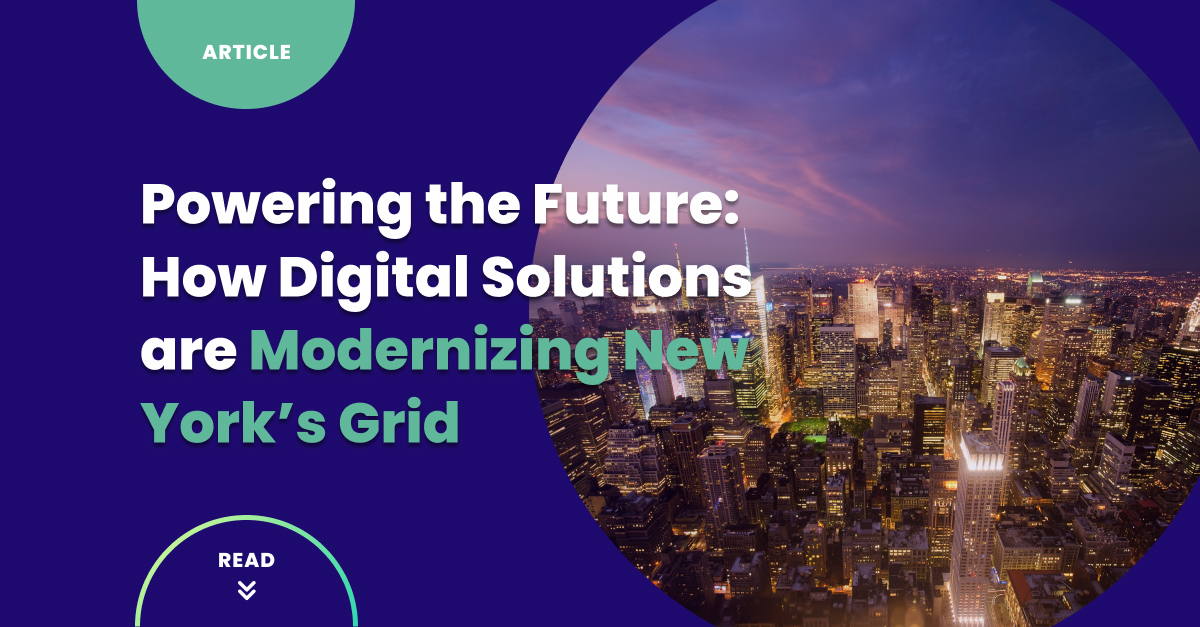Powering the Future: How Digital Solutions are Modernizing New York’s Grid

New York’s electric grid is navigating a profound transformation, driven by ambitious climate policies and a surging demand for power. The New York Independent System Operator (NYISO) has highlighted these shifts in its recent reports, painting a picture of a grid under increasing pressure but also ripe for innovation. This complex scenario—marked by a changing resource mix and new consumption patterns—is a powerful case study for how advanced software and digital platforms are becoming essential tools for grid modernization.
A Grid Under Strain: The New Reality
For years, New York’s electricity demand remained relatively flat. That era is over. The NYISO’s 2025 Power Trends report identifies two major forces reversing this trend:
- Energy-Intensive Economic Development: The report notes a dramatic increase in requests for new grid interconnections from large-load projects like data centers and microchip fabrication plants. By April 2025, there were 20 such projects in the queue, with a potential to add nearly 4,400 MW of load to the grid.
- Electrification: The widespread adoption of electric vehicles and heat pumps is fundamentally altering how and when energy is consumed. This trend is expected to cause New York to transition from a summer-peaking to a winter-peaking grid by the 2040s, with winter demand forecasted to increase by approximately 14,000 MW by 2040.
This rising demand is occurring as the state’s generation fleet is shrinking. Since the passage of the Climate Leadership and Community Protection Act (CLCPA) in 2019, over 4,300 MW of capacity has been deactivated, while only 2,274 MW has been added—a net loss of more than 2,000 MW. This imbalance is narrowing reliability margins and increasing the risk of future outages.
The Software Layer: Enabling Grid Flexibility and DERs
To meet these challenges, a new operational model is emerging, one that prioritizes flexibility and intelligent resource management. This is where software and digital solutions become indispensable. Rather than just relying on large-scale, centralized power plants, the grid of the future will depend on a vast, interconnected network of Distributed Energy Resources.
A report from the Brattle Group suggests that DERs, including EVs and smart HVAC systems, could provide up to 8.5 GW of grid flexibility by 2040 in New York. This immense potential can only be unlocked with a sophisticated software layer that can aggregate, control, and optimize these assets.
This is the role of platforms such as Distributed Energy Resource Management Systems (DERMS) and advanced energy management software. These solutions:
- Orchestrate Demand Response (DR): Software is the engine behind modern DR programs. It can analyze real-time data from millions of smart devices, predict load patterns, and dispatch targeted, precise DR events. This ensures that consumer participation in DR is seamless and minimally disruptive, addressing key concerns about comfort and control.
- Integrate and Optimize DERs: A single software platform can manage a diverse portfolio of DERs—from residential battery storage to commercial EV chargers—treating them as a unified “virtual power plant.” This allows utilities to intelligently control these assets to support grid stability, alleviate congestion, and reduce the need for costly infrastructure upgrades.
- Enhance Operational Planning: The NYISO itself is using advanced software to plan for these new realities. As part of its planning process, it is developing new models to address a winter-peaking system and potential fuel supply constraints, assuming that a significant portion of gas-only generation may be unavailable during cold weather. This type of detailed, scenario-based modeling is only possible with powerful digital tools.
Competitive Markets and the Path Forward
The NYISO is leveraging its competitive wholesale markets to incentivize these technological advancements. By creating market signals that value flexible, dispatchable, and emissions-free resources, the NYISO is attracting the kind of investment needed to build a modern grid. The launch of a new “Cluster Study” process for developers and the creation of a dynamic reserves framework are prime examples of how the NYISO is using market and process design to drive innovation and attract new resources.
In a world where new challenges like extreme weather and energy-intensive technologies are putting pressure on the grid, the solution isn’t just more steel and wire. It’s also about more intelligent software. For New York, the transition to a cleaner, more resilient grid will be a masterclass in how advanced digital solutions can empower consumers, integrate new technologies, and secure a reliable energy future.